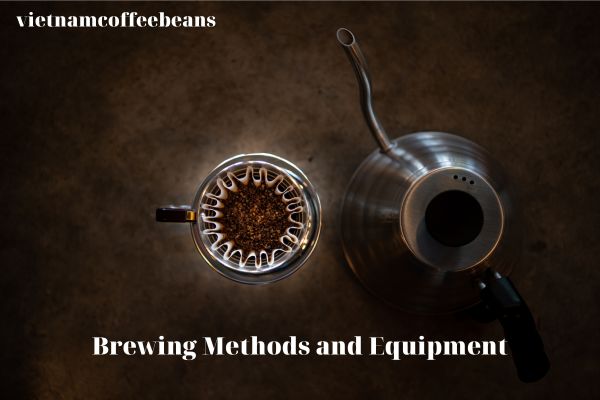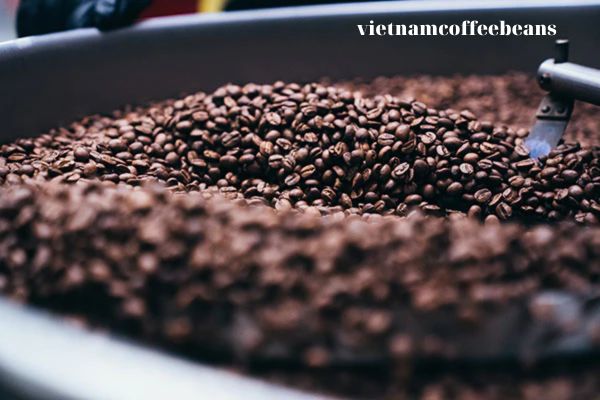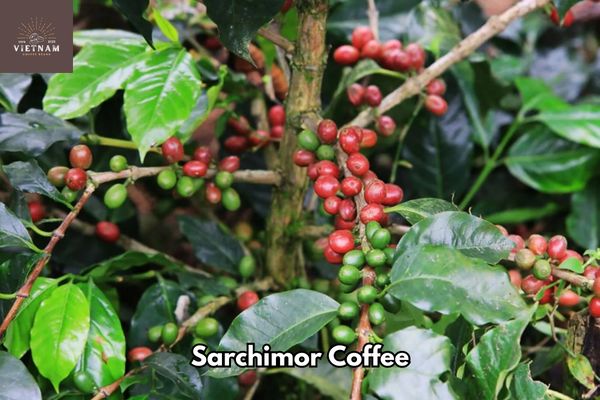When it comes to making the perfect cup of cold brew coffee, there’s a secret ingredient that can make all the difference: the coffee-to-water ratio (see guide to coffee brewing ratios). As they say, “It’s all about striking the right balance!” Getting this ratio just right is crucial for extracting those smooth and rich flavors we crave in our cold brew.
So, what exactly is the cold brew coffee ratio? Well, my friend, it refers to the precise measurement of coffee grounds to water when making this deliciously refreshing beverage. Understanding and nailing this ratio is key to achieving that velvety texture and bold taste that sets cold brew apart from its hot brewed counterpart.
In this article, I’ll delve into everything you need to know about finding your perfect cold brew coffee scale. From understanding the importance of ratios in extracting flavors, to exploring different making methods and equipment options – we’ve got you covered. So grab your favorite mug (or mason jar!) and let’s dive into the world of this coffee ratios together!
Read on to discover the ideal coffee-to-water ratio for your cold brew, along with some tips and tricks to help you perfect your brew. And if you’re wondering how to measure percolator coffee ratio, the answer is simple. All you need is a measuring cup and some coffee beans to get started. So why not experiment and create your perfect cup of cold brew coffee today?
Key Takeaways
- The coffee-to-water ratio is crucial for making perfect cold brew coffee, typically 1 part coffee to 4 parts water.
- The cold brew process involves steeping roughly ground coffee beans in cold or room temperature water for 12-24 hours.
- There are different making methods for this coffee, such as using a French press, cold brew maker, or mason jar.
- It has several benefits, including lower acidity, a smoother taste, and higher caffeine content compared to hot brewed coffee.
Cold Brew Coffee Ratio: What is this coffee?

As with finding the ideal ratio for perfect pour over coffee, understanding the coffee-to-water ratio in cold brew is crucial to achieving a brew that’s smooth and full of flavor.
It is a popular coffee drink that is made by steeping coffee grounds in cold water for an extended period of time. To make cold brew coffee at home, you’ll need to start with the right coffee to water ratio.
A good starting point is 1 gram of coffee for every 8 grams of water. This brew ratio can be adjusted to taste, so feel free to experiment with your own coffee recipe.
Unlike hot coffee, cold brew is less acidic and has a smoother taste. It’s easy to make and can be enjoyed at home or on the go. Whether you prefer to make coffee using a coffee filter or purchase it from your favorite coffee shop, cold brew is a delicious and refreshing way to enjoy the best coffee.
If you’re looking to upgrade your coffee game, let me introduce you to this coffee – a smooth and refreshing way to enjoy your caffeine fix without the bitterness of traditional hot brewed coffee.
Cold brew is not just iced coffee; it’s made using a unique extraction process that results in a distinct flavor profile. Rather than making with hot water, cold brew is made by steeping coarsely ground coffee beans in cold or room temperature water for an extended period of time, usually around 12-24 hours.
This slow extraction process allows the flavors to fully develop, resulting in a rich and less acidic cup of coffee. The type of coffee beans used also plays a significant role in the final taste, so choose wisely!
If you’re interested in other brewing methods, a guide to perfect French press ratio is a great resource for anyone starting or willing to improve their French press technique.
The Importance of the Coffee-to-Water Ratio to make cold brew

Just as our guide to optimal drip coffee ratio enhances your hot coffee experience, understanding the right coffee-to-water ratio is the secret to a smooth and flavorful cold brew.
Achieving the perfect balance between the rich essence of coffee and the refreshing element of water is like finding the sweet spot in a delicate dance. The coffee-to-water ratio plays a crucial role in determining its flavor profile and strength.
This ratio refers to the amount of ground coffee used in relation to the volume of water. The key is to strike a balance that extracts just enough flavor without overpowering bitterness or diluting the taste.
A general rule of thumb for cold brew is using a 1:4 ratio, meaning one part coffee to four parts water. However, this can be adjusted according to personal preference for stronger or milder brews.
While this is a good starting point for cold brew, it is important to note that this ratio may not be applicable for an aeropress coffee brewing guide.
Experimenting with different ratios and making techniques allows you to fine-tune your cold brew experience and find your ideal cup of joe.
To ensure you brew the perfect cup of cold brew coffee, you can also use methods such as the “How to brew Chemex coffee” as a guide, as they provide in-depth guidelines on coffee brewing ratios, including cold brew.
Brewing Methods and Equipment

The ultimate guide to cold brew includes different brewing methods, such as steeping or slow-drip, and equipment like mason jars, cold brewers, or French presses.
There are a few different methods and equipment options available. One popular method is using a French press, which allows for easy steeping and straining of the coffee grounds.
Another option is using a cold brew maker, which is specifically designed for making cold brew and often has a built-in filtration system. Lastly, some people prefer the simplicity of using a mason jar to make their cold brew, as it can be easily sealed and stored in the refrigerator during the making process.
If you prefer using a Moccamaster coffee maker, the moccamaster coffee ratio explained can be found in the user manual. The recommended coffee-to-water ratio for a Moccamaster coffee maker is 1:15, producing a delicious and flavorful cup of coffee.
Cold Brew in a French Press
Just as brewing coffee with golden ratio can enhance the flavor and balance of your hot coffee, mastering the coffee-to-water ratio in cold brew is crucial to achieving a brew that’s full-bodied and smooth.
To make cold brew in a French press, all you need is your favorite coffee grounds and water, combined in a 1:4 ratio. The French press is not only a convenient making method but also a popular alternative to specialized cold brew equipment. Its simplicity allows for the extraction of rich flavors from the coffee grounds.
The 1:4 ratio means that for every part of coffee grounds, you will use four parts of water. This ratio ensures a strong and concentrated cold brew that can be diluted with water or milk to taste. Using this method, you can experiment with different types of coffee beans and grind sizes to create unique flavor variations in your cold brew.
Whether you prefer a smooth and chocolatey blend or a bright and fruity one, the French press allows you to explore various flavor profiles in your homemade cold brew.
Using a Cold Brew Maker or Mason Jar
For the best results, you’ll want to use a cold brew maker or mason jar. These methods offer convenience and allow for optimal extraction of flavors. Here’s how to make cold brew using these alternative steeping methods:
- Start by coarsely grinding your coffee beans. A medium-dark roast works best for cold brew.
- Measure out your coffee grounds and water in a scale of 1:4. This means 1 part coffee to 4 parts water.
- Place the coffee grounds in the cold brew maker or mason jar, and then add the water.
- Stir gently to ensure all the grounds are saturated, and then cover with a lid or plastic wrap.
Let your mixture steep in the refrigerator for about 12-24 hours to allow for proper extraction of flavors.
Cold brew offers many benefits such as lower acidity, smoother taste, and higher caffeine content compared to traditional making methods. Using a cold brew maker or mason jar ensures that you achieve the perfect balance of flavors while enjoying these benefits.
Steeping Time and Temperature
When it comes to finding the right steeping time for your preference in this coffee, there are a few factors to consider. The general rule of thumb is to steep the coffee grounds in cold water for anywhere between 12 and 24 hours, depending on how strong you like your brew. However, it’s important to note that steeping times can vary based on personal taste and the type of beans used.
Another point to consider when making cold brew is whether to steep it in the fridge or at room temperature. Steeping in the fridge tends to result in a smoother and less acidic brew, while steeping at room temperature can bring out more bold flavors. Ultimately, it comes down to personal preference and experimentation to find which method yields the best results for your taste buds.
Overall, finding the right steeping time and deciding between making methods can greatly impact the flavor profile of your coffee. It’s worth taking the time to experiment with different variables to discover your perfect cup of cold brew.
Finding the Right Steeping Time for Your Preference
Ready to dive into the world of this coffee? Let’s talk about finding the perfect steeping time for your personal taste. When it comes to cold brew, the steeping time plays a crucial role in determining the flavor profile of your coffee.
Here are three key factors to consider when finding the right steeping time:
- Finding the perfect grind size: Experiment with different grind sizes to see which one yields the best results. A coarser grind will generally require a longer steeping time, while a finer grind may need less time.
- Experimenting with different coffee beans: Different coffee beans have varying flavors and characteristics. Try using different types of beans to find the ideal steeping time that brings out their unique qualities.
- Taste testing along the way: As you experiment with different variables, make sure to taste test your cold brew at various intervals during the steeping process. This will help you determine when it reaches your desired level of strength and flavor.
By taking these factors into consideration and being open to experimentation, you’ll be able to find the perfect steeping time that suits your preference and allows you to enjoy a delicious cup of this coffee every time!
Cold Brew in the Fridge vs. Room Temperature
Now that we’ve discussed the importance of finding the right steeping time for your preferred taste, let’s delve into another aspect of cold brew coffee: whether to brew it in the fridge or at room temperature. Both methods have their advantages and can affect the final flavor profile of your cold brew.
Making cold coffee in the fridge slows down the extraction process, allowing for a smoother and less acidic brew.
This method is ideal for those who prefer a milder taste with subtle flavors. On the other hand, making at room temperature speeds up extraction, resulting in a more robust and full-bodied cup of cold brew. The warmer environment allows for greater solubility of coffee compounds, leading to a stronger flavor.
Ultimately, choosing between these two cold brew extraction methods depends on personal preference. Experimentation is key when it comes to finding the perfect balance of flavors that suits your palate.
Serving and Enjoying Cold Brew Coffee
When it comes to serving and enjoying this coffee, there are a few key points to consider. First, some people prefer to dilute their cold brew with water or ice to adjust the strength and flavor to their liking.
Additionally, adding milk or sweeteners like syrup or honey can enhance the taste and create a smoother texture. Finally, for those looking for a bit of creativity, cold brew cocktails and unique recipes offer exciting ways to enjoy this refreshing beverage.
Diluting and Adding Milk or Sweeteners
As you dive into the world of this coffee, don’t be afraid to experiment with diluting it or adding milk and sweeteners to create your perfect cup. It can be quite strong, so dilution techniques can help adjust the flavor to your preference.
You can simply add water to your cold brew concentrate, starting with a 1:1 scale and then adjusting from there based on taste. Another popular method is making an “Americano” style cold brew by adding hot water instead of cold water.
This can bring out different flavors and aromas in the coffee. Additionally, you may choose to add milk or sweeteners to customize the flavor further.
Milk options like dairy, almond, or oat milk can provide a creamy texture while sweeteners like sugar, honey, or flavored syrups can enhance the overall taste experience. Have fun experimenting with different combinations until you find your ideal cup of cold brew!
Cold Brew Cocktails and Creative Recipes
To elevate your cold brew experience, explore the realm of cold brew cocktails and innovative recipes. This coffee isn’t just limited to a refreshing morning beverage; it can also be the star ingredient in unique cold brew cocktails that will impress your guests.
One popular recipe is the Cold Brew Martini, which combines vodka, coffee liqueur, and a splash of cold brew for a rich and indulgent twist on a classic cocktail. Another creative option is the Cold Brew Old Fashioned, where cold brew replaces the traditional whiskey for a smooth and complex flavor profile.
For those with a sweet tooth, try making a Cold Brew Affogato by pouring cold brew over vanilla ice cream—a decadent treat that perfectly balances bitterness and sweetness. With these inventive recipes, you can take your love for cold brew to new heights and enjoy its bold flavors in exciting ways.
One thing that you should not do, however, is to use the turkish coffee brewing method for cold brew coffee. Turkish coffee is a very fine grind of coffee that is boiled with water and sugar in a small pot called a cezve.
This method produces a very strong and bitter coffee that is not suitable for cold brew. If you try to use turkish coffee for cold brew, you will end up with a sludgy and unpleasant drink that will not taste good at all.
Frequently Asked Questions
Conclusion
In conclusion, the cold brew coffee ratio is a crucial aspect of creating the perfect cup of cold brew. By experimenting with different scales, you can discover your preferred balance between boldness and smoothness.
Remember, the key is to maintain a strong coffee-to-water scale for a rich flavor profile. Whether you enjoy it straight or with milk and sugar, finding the right scale will ensure a delightful and refreshing experience every time.
So go ahead, grab your favorite beans, adjust that coffee-to-water scale, and immerse yourself in the world of delicious cold brew coffee.






